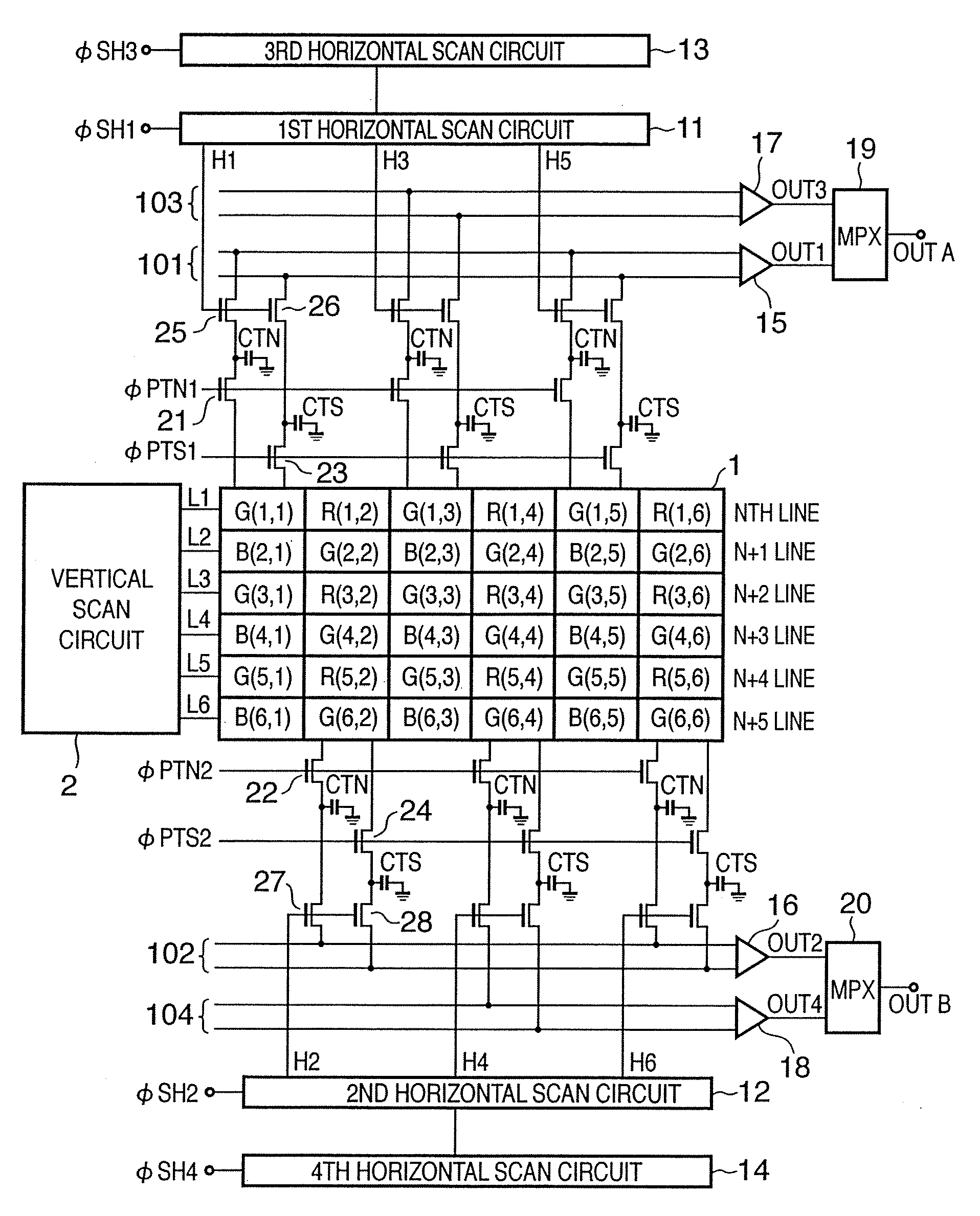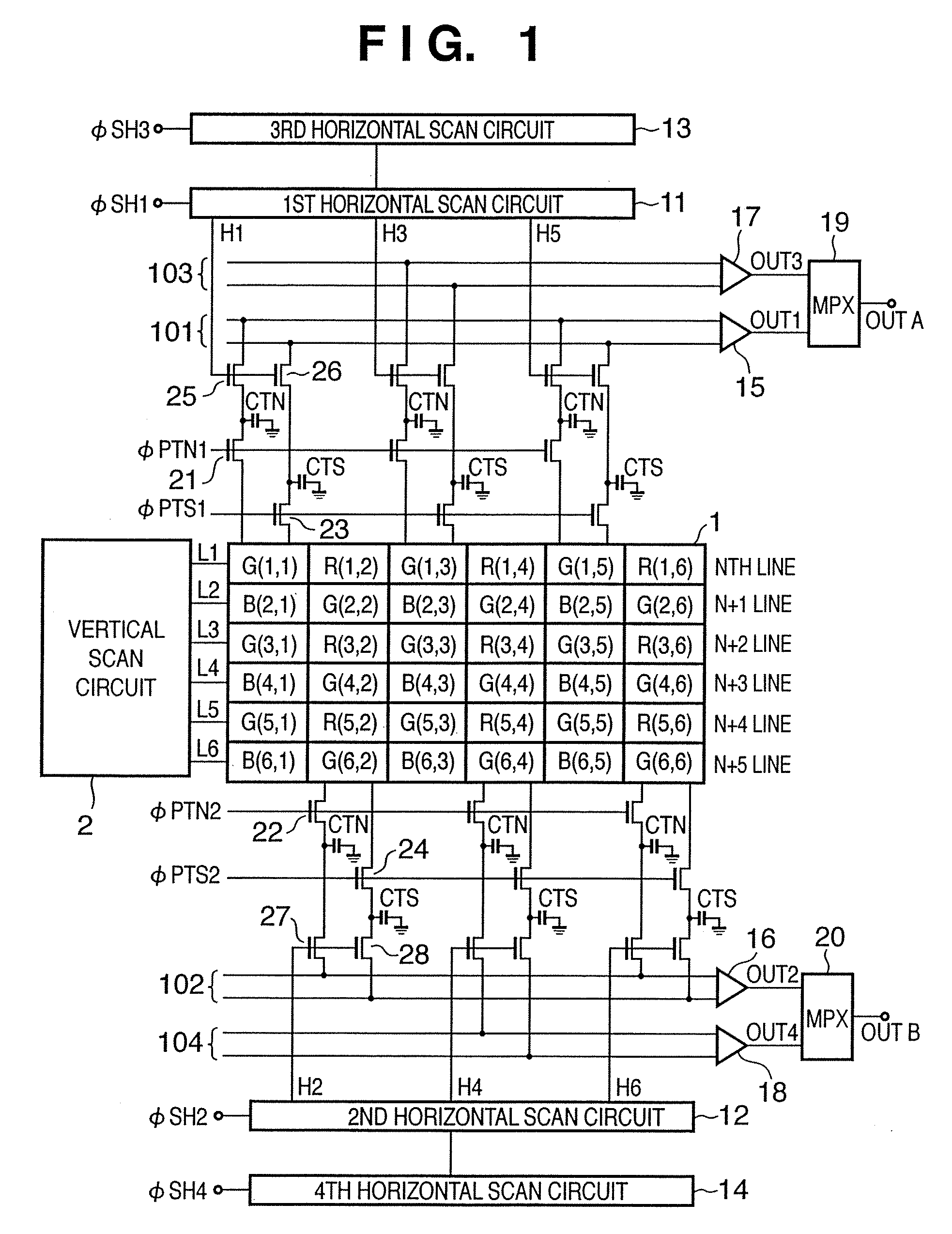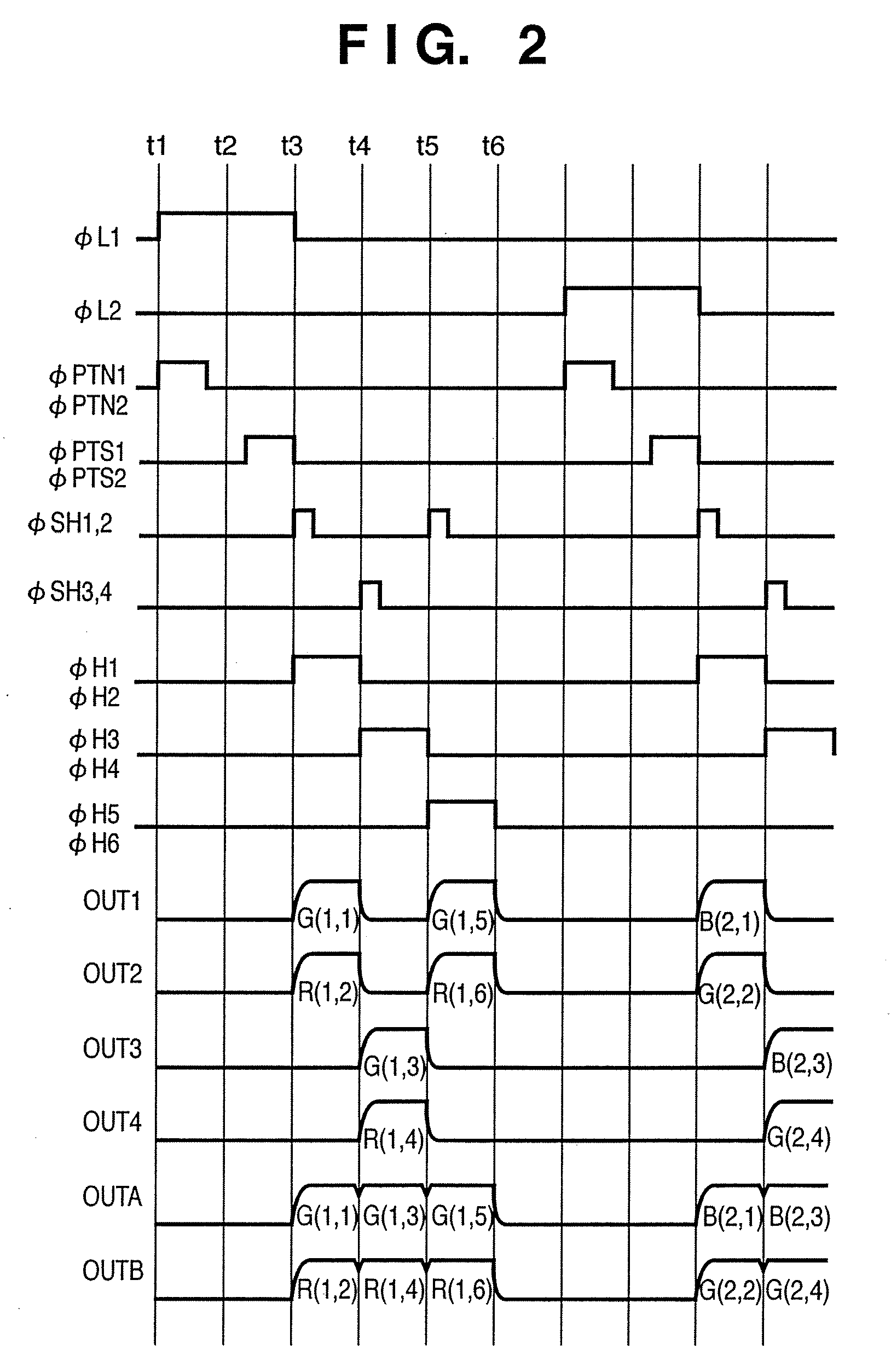Signal readout structure for an image sensing apparatus
a signal readout and image sensing technology, applied in the direction of television system, television system scanning details, radioation controlled devices, etc., can solve the problems of complicating downstream signal processing circuit structure for operations, two colors will mix, and increase the number of output pins, etc., to achieve the effect of simple structure and superior picture quality
- Summary
- Abstract
- Description
- Claims
- Application Information
AI Technical Summary
Benefits of technology
Problems solved by technology
Method used
Image
Examples
first embodiment
(First Embodiment)
[0045] A description is now given of the first embodiment of the present invention, with reference to FIGS. 1 and 2.
[0046]FIG. 1 is a diagram of the structure of an image sensing apparatus according to a first embodiment of the present invention. FIG. 2 is a timing chart showing the drive timing and output signals of the image sensing apparatus of FIG. 1.
[0047] In FIG. 1, reference numeral 1 denotes a pixel having a Bayer arrangement color filter. The numbers inside the parentheses next to the color designations R (red), G (green) and B (blue), are the pixel coordinates. It should be noted that, for simplicity of description, the present example uses a 6×6 arrangement of pixels, but in fact an extremely large number of pixels are arrayed in an actual arrangement.
[0048] The pixels 1 are each connected to line selection lines L1-L6 at each line, with the line selection lines L1-L6 being turned HIGH (hereinafter H) in sequence by line selection signals supplied fro...
second embodiment
(Second Embodiment)
[0057] A description will now be given of the second embodiment of the present invention, with reference to the accompanying drawings.
[0058] It should be noted that, in order to simplify the explanation, a description of the drive method and noise deletion method is omitted for the second and all subsequent embodiments of the present invention described herein below.
[0059]FIG. 3 is a diagram of the structure of an image sensing apparatus according to a second embodiment of the present invention. FIG. 4 is a timing chart showing the drive timing and output signals of the image sensing apparatus of FIG. 3. As can be seen in FIG. 3, in the second embodiment, the first and third horizontal scan circuits 11 and 13 of the first embodiment shown in FIG. 1, as well as the second and fourth horizontal scan circuits 12 and 14 also shown in FIG. 1, have each been replaced with a single horizontal scan circuit. It should be noted that, in FIG. 3, structures that are the sam...
third embodiment
(Third Embodiment)
[0062] A description will now be given of a third embodiment of the present invention, with reference to the accompanying drawings.
[0063]FIG. 5 is a schematic diagram of the structure of an image sensing apparatus according to a third embodiment of the present invention. FIG. 5 shows an arrangement in which the signal lines 101-104 depicted in FIG. 1 and FIG. 3 output to left and right lateral directions from a center thereof. It should be noted that, in FIG. 5, structures that are identical to those shown in FIGS. 1 and 3 are given identical reference numerals, and structures equivalent to those shown in FIGS. 1 and 3 but divided into lateral arrangements are given reference numerals followed by the reference symbol R (right) or L (left), as appropriate. Also, as can be appreciated by those of ordinary skill in the art, the structure shown in FIG. 5 can be easily adapted to the image sensing apparatus of the first embodiment described above.
PUM
 Login to View More
Login to View More Abstract
Description
Claims
Application Information
 Login to View More
Login to View More - R&D
- Intellectual Property
- Life Sciences
- Materials
- Tech Scout
- Unparalleled Data Quality
- Higher Quality Content
- 60% Fewer Hallucinations
Browse by: Latest US Patents, China's latest patents, Technical Efficacy Thesaurus, Application Domain, Technology Topic, Popular Technical Reports.
© 2025 PatSnap. All rights reserved.Legal|Privacy policy|Modern Slavery Act Transparency Statement|Sitemap|About US| Contact US: help@patsnap.com



